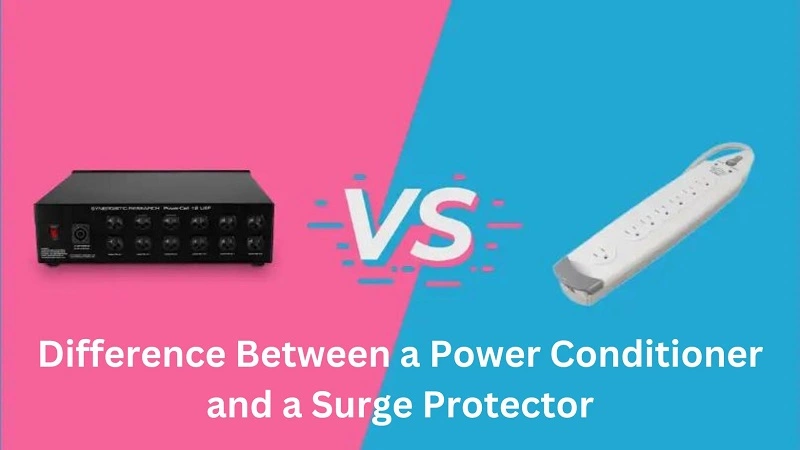When protecting your electronic devices from power problems, power conditioners, and surge protectors are two common terms that come to mind.
Although they may seem similar, the two have significant differences that every homeowner should know.
This article will explore the key differences between a power conditioner and a surge protector.
We’ll discuss their functions, benefits, and how they work to safeguard your expensive electronic devices from power-related issues.
WHAT IS A POWER CONDITIONER?
A power conditioner is an electrical device designed to regulate the quality of the incoming power supply to your electronic devices.
It is used to eliminate electrical noise, voltage fluctuations, and other disturbances that could affect the performance of your devices.
Power conditioners are commonly used in high-end home theaters, recording studios, and other professional settings where even the slightest power fluctuations could significantly impact performance.
WHAT IS A SURGE PROTECTOR?
On the other hand, a surge protector is designed to protect your electronic devices from voltage spikes or surges that could damage them.
These surges can occur due to lightning strikes, power outages, or other electrical issues.
Surge protectors are commonly used in homes, offices, and other settings to protect computers, televisions, and other electronics from power-related damage.
Related: CAN YOU USE POWER MANAGER IF YOU HAVE SURGE PROTECTOR?
THE DIFFERENCE BETWEEN A POWER CONDITIONER AND A SURGE PROTECTOR
While power conditioners and surge protectors are designed to protect your electronics from power issues, they serve different purposes.
A power conditioner is designed to regulate the quality of the incoming power supply, whereas a surge protector is designed to protect against voltage spikes or surges.
Here are some of the key differences between a power conditioner and a surge protector:
Functionality:
A power conditioner is designed to improve the quality of the incoming power supply, while a surge protector is designed to protect against power spikes or surges.
Protection:
A power conditioner protects against voltage fluctuations, electrical noise, and other disturbances that could affect the performance of your devices.
In contrast, a surge protector protects your devices from voltage spikes or surges that could cause damage.
Cost:
Power conditioners are typically more expensive than surge protectors due to their more complex circuitry and a higher level of protection.
Placement:
Power conditioners are usually placed between the wall outlet and your electronic devices, while surge protectors are typically plugged directly into the wall outlet.
Blog Article: Difference Between UPS and Power Managers
CONCLUSION: DIFFERENCE BETWEEN A POWER CONDITIONER AND A SURGE PROTECTOR
In conclusion, power conditioners and surge protectors are essential for protecting your electronic devices from power-related issues.
While they serve different purposes, using them together can provide optimal protection against power spikes, surges, and other disturbances.
When shopping for a power conditioner or surge protector, choose a high-quality product that provides the level of protection your devices need.
Doing so can ensure your electronics remain safe and in optimal working condition for years. And remember, it’s always better to be safe than sorry when protecting your valuable electronic devices.
In summary, understanding the difference between a power conditioner and a surge protector is crucial in ensuring the optimal performance of your electronic devices.
While power conditioners are designed to regulate the quality of the incoming power supply, surge protectors are meant to protect your devices against voltage spikes and surges.
Using these two devices together ensures your electronics remain safe and protected from power-related issues.
So, the next time you’re shopping for a power conditioner or a surge protector, make sure you understand the specific needs of your electronic devices and choose a high-quality product that provides the level of protection you need.
With the right tools and knowledge, you can protect your valuable electronics and enjoy their optimal performance for years.
FAQs: What is the difference Between A Power Conditioner And A Surge Protector
Can a power conditioner be used as a surge protector?
While power conditioners can offer some level of protection against power spikes, they are not designed to provide the same level of protection as surge protectors. It is recommended to use both devices together for optimal protection.
How often do surge protectors need to be replaced?
Surge protectors should be replaced every 2-3 years or after exposure to a significant power surge.
Do power conditioners reduce energy consumption?
While power conditioners can help regulate the voltage and reduce electrical noise, they do not significantly reduce energy consumption.















